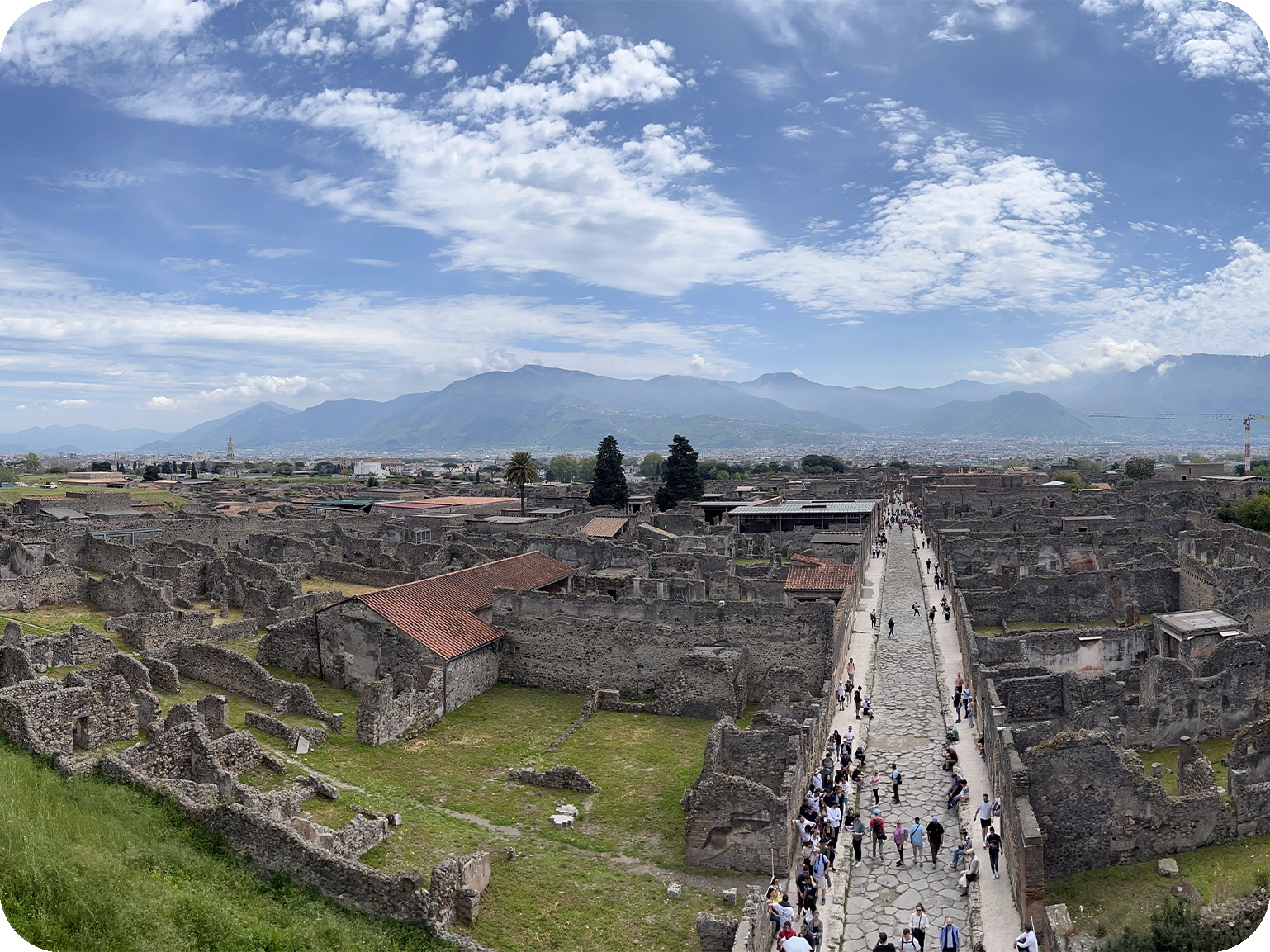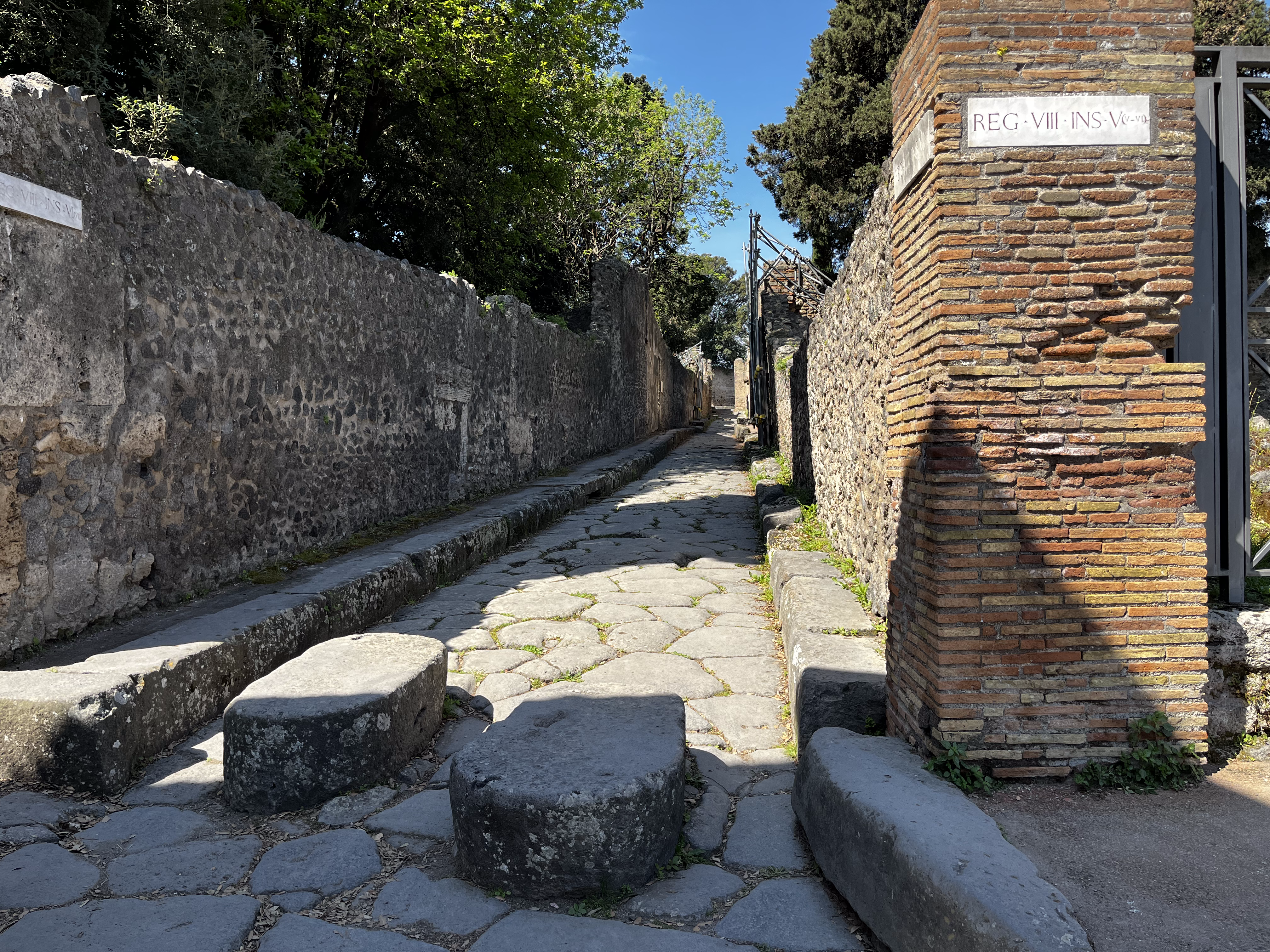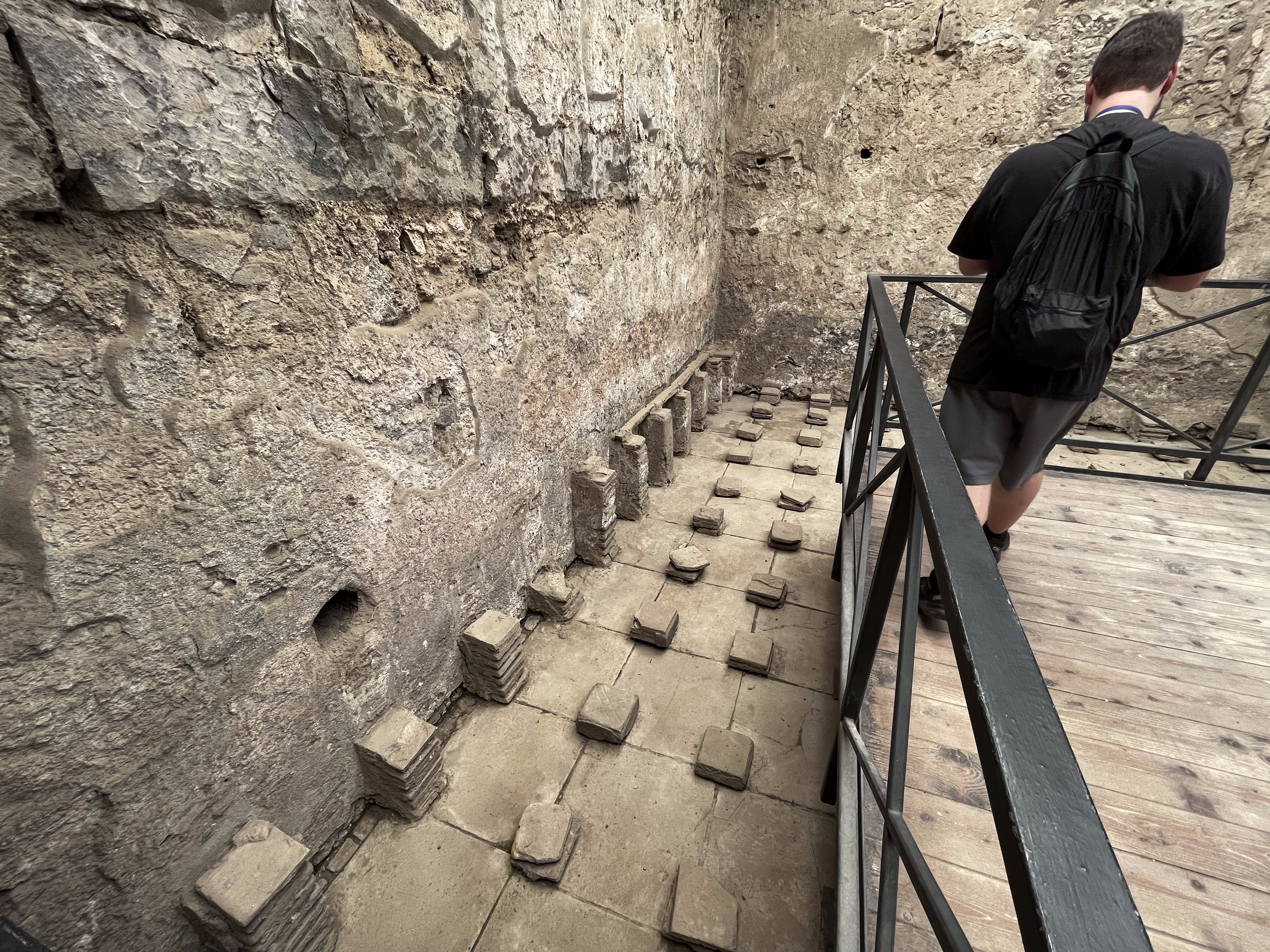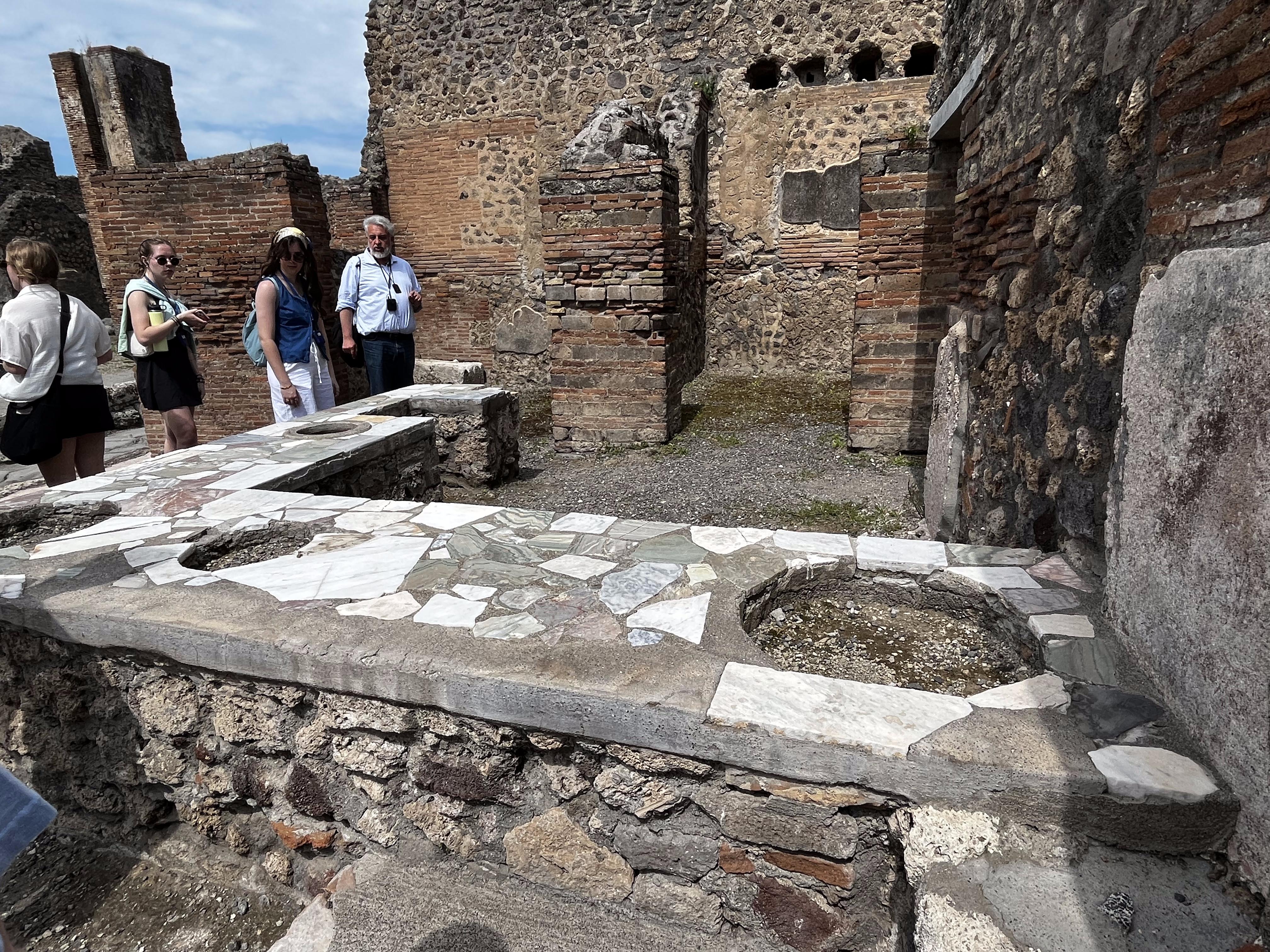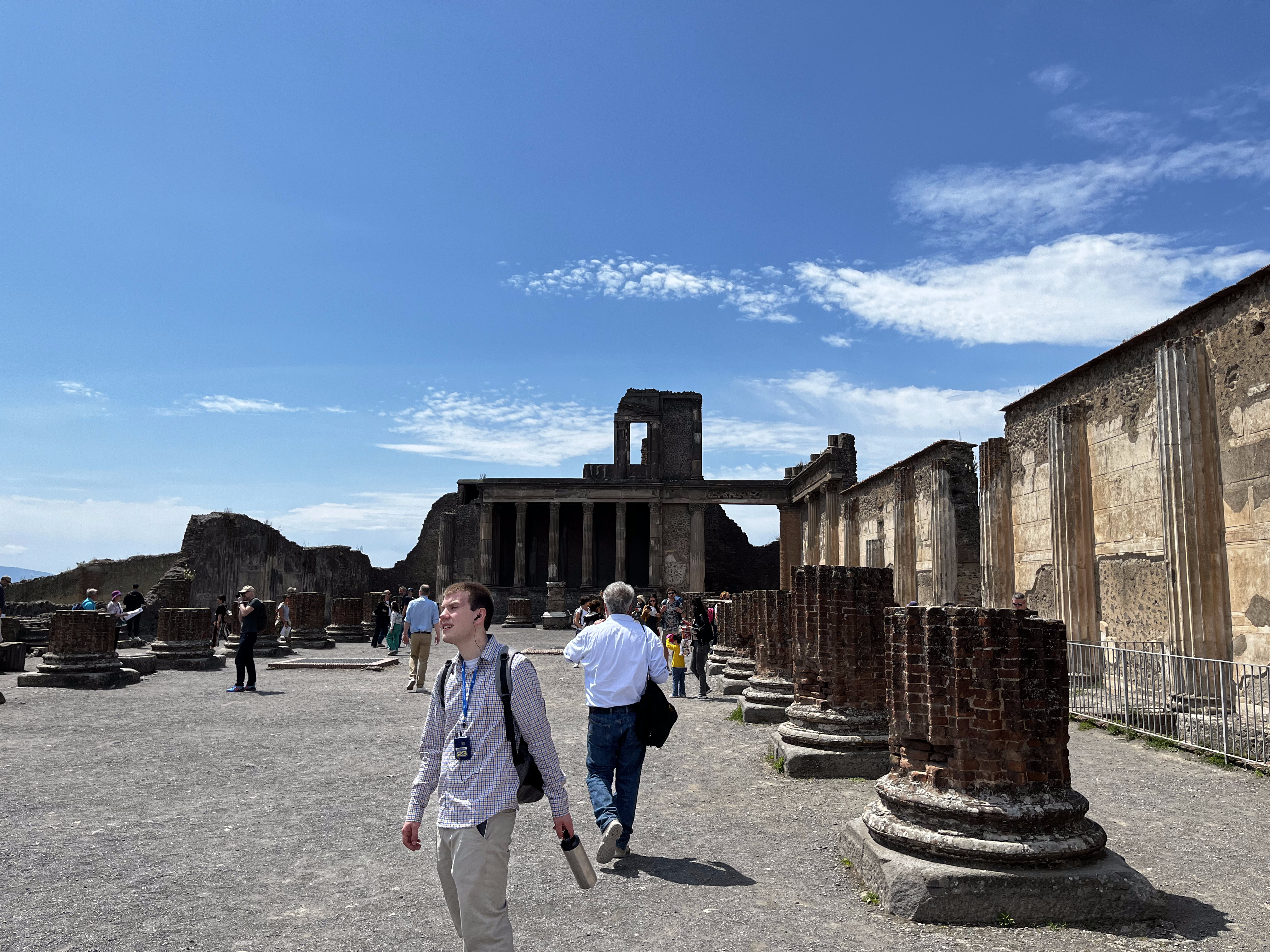A Short Gallery
The Theater
The Large Theater in Pompeii is an impressive archaeological site that showcases the architectural prowess of its time. With its semicircular design, it could accommodate up to 5,000 spectators, making it a significant venue for various performances and entertainment. The well-preserved structure offers valuable insights into the cultural vibrancy of ancient Pompeii.
The Streets
The streets of Pompeii provide a fascinating window into both the engineering and social aspects of the ancient city. These remarkably preserved thoroughfares, constructed with stone and featuring sidewalks, offer insights into the meticulous urban planning and infrastructure of that era. Walking along these ancient paths reveals the remnants of wheel ruts, stepping stones, and the presence of various structures lining the streets. These elements shed light on the transportation systems, social interactions, and bustling commercial activities that characterized life in Pompeii.
The Baths
The well-preserved Pompeii baths are a fascinating representation of the advanced bathing customs of ancient Rome. These structures contained multiple rooms and pools designed for bathing and relaxation. One noteworthy aspect is the raised floor (pictured), called the suspensura, which facilitated the circulation of warm air beneath and heated the rooms above. This ingenious engineering method ensured a cozy and pleasant atmosphere for bathers. The Pompeii baths offer valuable insights into the social and hygienic traditions of the era, providing visitors with a glimpse into the lavish lifestyle and communal bathing rituals of the ancient Roman civilization.
The Thermopolium
Pompeii's thermopoliums are well-preserved remnants of the city's vibrant food culture. These establishments served as street food vendors, offering a variety of prepared meals and drinks. With stone counters and dolia (large terracotta jars) for food storage and serving, these thermopoliums were adorned with intricate frescoes depicting the available culinary delights. Beyond providing sustenance, these establishments also functioned as social gathering spots, where locals and visitors would convene for a quick meal and engaging conversations. Exploring Pompeii's thermopoliums provides a fascinating insight into the lively street food scene and communal dining customs of ancient Rome.
The Forum
The Pompeii Forum, an intriguing archaeological site, served as the vibrant epicenter of the ancient city. This central public square was a bustling hub for social, political, and economic activities. Surrounded by impressive buildings, temples, and markets, it thrived as a vibrant center for commerce and civic life. The Forum hosted significant public events, including speeches, elections, and legal proceedings. Preserved architectural elements like colonnades and statues provide valuable glimpses into the grandeur and importance of this historic civic space. Exploring the Pompeii Forum offers a remarkable opportunity to engage with the rich history and cultural legacy of this once-thriving Roman city.
The Basilica
The Pompeii Basilica, an impressive archaeological site, exemplifies the architectural and civic significance of ancient Rome. This grand structure served as a versatile space, combining features of a courthouse, marketplace, and social gathering spot. With its spacious central hall and columns, the basilica hosted legal proceedings, commercial activities, and social interactions. Its well-preserved architectural details, including ornate friezes, provide insights into the artistic sophistication of the era. Exploring the Pompeii Basilica offers a glimpse into the vital role it played in the daily life of the city as a civic and commercial hub.
There's a lot more to see at the archaeological site of Pompeii. Unfortunately, due to how quick our tour was, we both didn't have the chance to see all of it, nor take pictures of all of it.
© 2023, Andrea Dall'Ara. Some Rights Reserved
